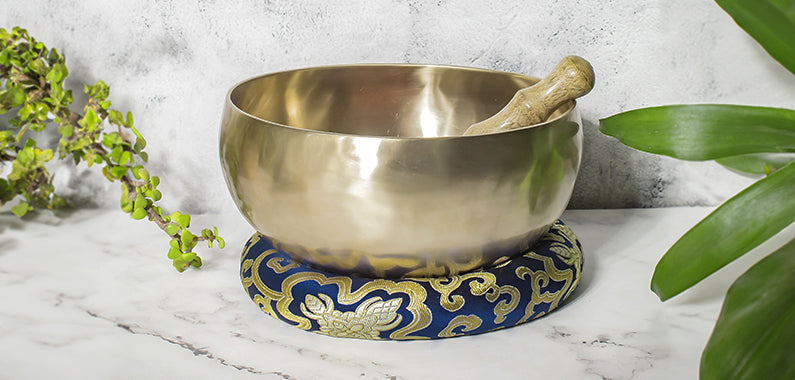History of Singing bowls
Singing bowls, also known as Himalayan bowls or Tibetan singing bowls, are believed to have originated in the regions of Asia, specifically in the Himalayan region, around 2,000 to 2,500 years ago. However, the exact origin remains shrouded in mystery, as these artifacts date back to an era when oral traditions were common and few written records exist. Some people also believe it to originate from Mesopotamia and began their tale as utilitarian vessels, primarily used for storing food. Over time, they were disseminated across the sprawling reaches of the Himalayas via the Silk Road trading network, finding their resonance within the spiritual and the mundane.
The singing bowls were believed to have been made from a blend of seven sacred metals, each representing a celestial body: gold (Sun), silver (Moon), mercury (Mercury), copper (Venus), iron (Mars), tin (Jupiter), and lead (Saturn). Crafted by skilled artisans, each bowl was unique, producing a medley of harmonic overtones that resonate long after being struck or stroked. Despite the name 'Tibetan singing bowls', they are not exclusive to Tibet. Singing bowls were widely used across Asia, including in Nepal, India, Bhutan, and Japan. In these regions, singing bowls were not merely musical instruments but held significant spiritual and ritualistic importance. In Buddhism, which is prevalent in these areas, the bowls were used as part of meditation and chanting ceremonies to aid in the journey of self-discovery and enlightenment. The soothing and harmonic sounds that emanate from these bowls were thought to promote a deeper meditative state.

Buddhist monks carried these singing bowls along the ancient trade routes between Asia and the Middle East, contributing to their dissemination and adoption by other cultures. Over time, the bowls found a new home in various healing and spiritual practices globally. In the mid-20th century, the use of singing bowls in meditation and alternative healing began to gain popularity in the West, sparking interest in their cultural, historical, and spiritual significance. Today, they have evolved beyond their religious roots and are used widely in health and wellness practices for stress reduction and promoting relaxation. Many people now use them in yoga, music therapy, sound healing, and personal well-being practices.
From ancient times to the present day, singing bowls have continued to enchant and heal with their melodic hum. These simple yet profound instruments have managed to bridge the gap between the ancient and modern worlds, providing a spiritual connection that transcends geographical boundaries and cultures. Their history and origins remind us of the depth of our human quest for understanding, healing, and spiritual connection.
Summing up, the history of singing bowls is not just about the evolution of a musical instrument but a testament to humanity's age-long fascination with sound and its healing potential. Despite their ancient origins, singing bowls continue to remain relevant today, soothing the souls of those who seek tranquility in their harmonious symphony. As we look ahead, these timeless instruments are sure to continue their resonant journey, touching lives and promoting wellness for many more centuries to come.















